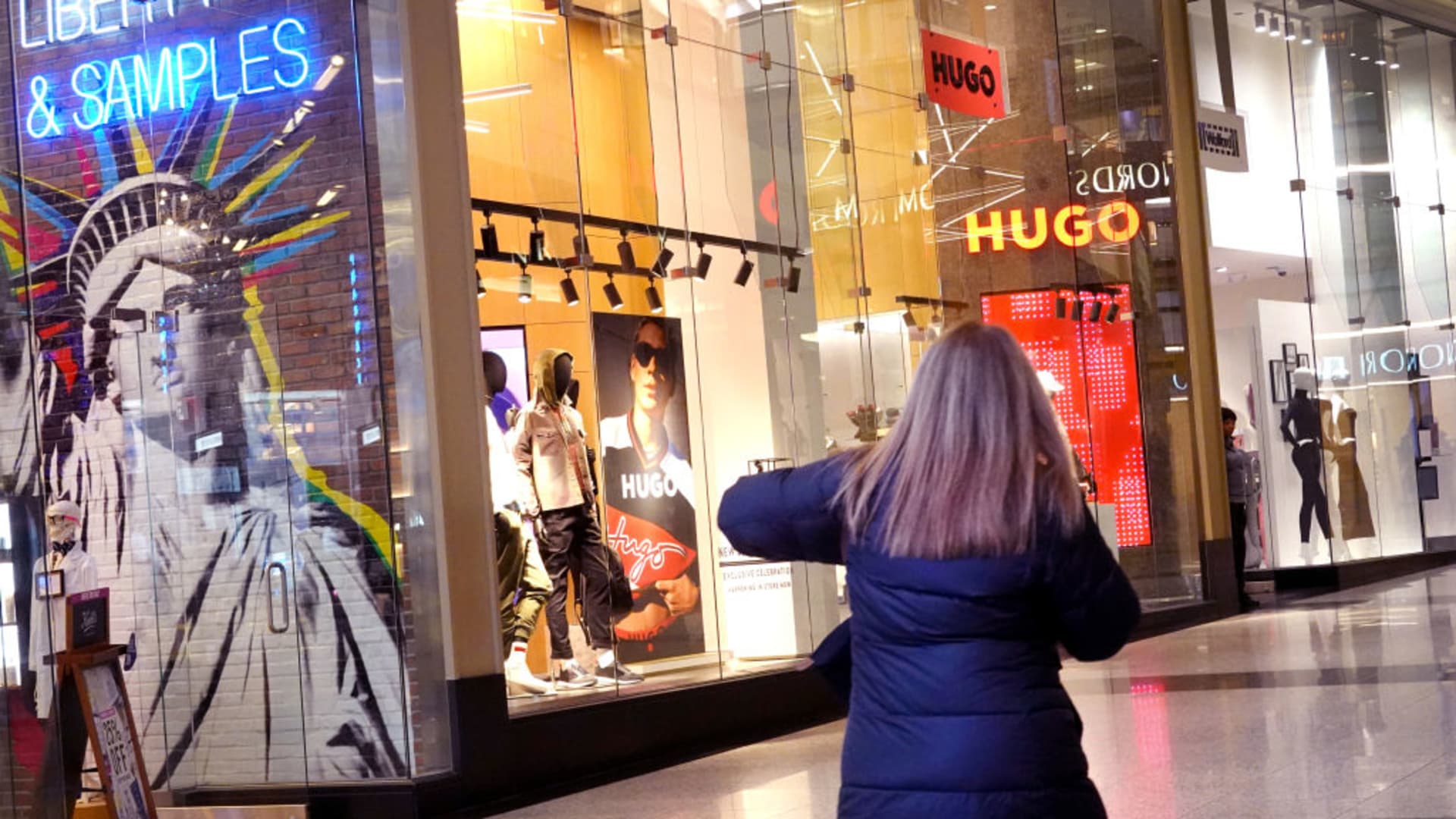U.S. GDP rose at a 1.1% pace in the first quarter as signs build that the economy is slowing

Growth in the U.S. slowed considerably during the first three months of the year as interest rate increases and inflation took hold of an economy largely expected to decelerate even further ahead.
Gross domestic product, a measure of all goods and services produced for the period, rose at a 1.1% annualized pace in the first quarter, the Commerce Department reported Thursday. Economists surveyed by Dow Jones had been expecting growth of 2%.
The growth rate followed a fourth quarter in which GDP climbed 2.6%, part of a year that saw a 2.1% increase.
The report also showed that the personal consumption expenditures price index, an inflation measure that the Federal Reserve follows closely, increased 4.2%, ahead of the 3.7% estimate. Stripping out food and energy, core PCE rose 4.9%, compared to the previous increase of 4.4%.
Stocks were solidly higher following the report while Treasury yields spiked.
“People were still spending even despite higher prices, even despite higher inflation and a big drag that we had from inventories,” Citigroup economist Veronica Clark said. “Overall, I think it’s a relatively inflationary report, even though the headline GDP number a bit softer. All of those signs that demand is still strong and prices are still rising were very much present today.”
Like most other Wall Street forecasters, Citi expects the economy eventually to tip into recession, though Clark said the timing is uncertain.
“We would have expected to see some more slowing at this point, though you’re definitely getting signs that you’re on the margin,” she said. “So it doesn’t look like we’re going to be immediately slowing into a recession. And I think this Q1 data definitely helps to confirm that, especially [since] consumption is still so strong.”
The slowdown in growth came due to a decline in private inventory investment and a deceleration in nonresidential fixed investment, the report said. The inventory slowdown took 2.26 percentage points off the headline number.
Consumer spending as measured by personal consumption expenditures increased 3.7% and exports were up 4.8%. Gross private domestic investment tumbled 12.5%.
“The U.S. economy is likely at an inflection point as consumer spending has softened in recent months,” said Jeffrey Roach, chief economist at LPL Financial. “The backward nature of the GDP report is possibly misleading for markets as we know consumers were still spending in January but since March, have pulled back as consumers are getting more pessimistic about the future.”
In other economic news Thursday, jobless claims totaled 230,000 for the week ended April 22, a decline of 16,000 and below the estimate for 249,000.
The GDP report comes as the Federal Reserve is seeking to slow an economy burdened by inflation that had been running at its highest level in more than 40 years.
In a policy tightening regime that began in March 2022, the central bank has raised its benchmark interest rate by 4.75 percentage points, taking it to the highest level in nearly 16 years. Though inflation has pulled back some from its peak around 9% in June 2022, it remains well above the Fed’s 2% goal. Policymakers all say inflation is still too high and will require elevated interest rates.
At the same time, growth has taken a hit from troubles in the banking sector that are likely to infect the economy ahead. Those two issues – the Fed’s rate hiking cycle and an expected credit crunch ahead – are expected to tilt the economy into recession later this year.
Consumers, though, have remained resilient and are expected to use excess savings and purchasing power to make the economic contraction short and shallow. A strong jobs market, with an unemployment rate at 3.5%, also is expected to underpin growth.









